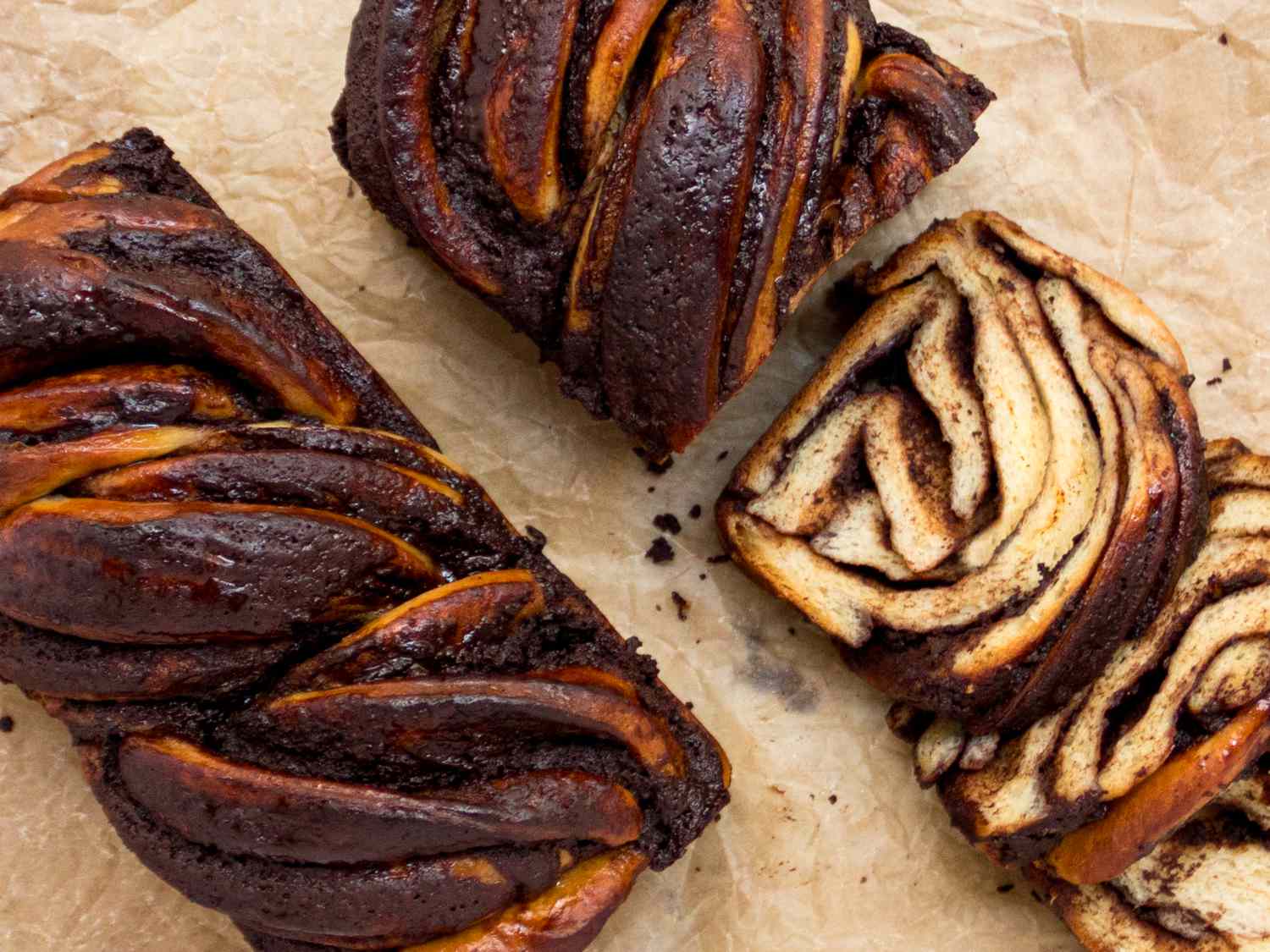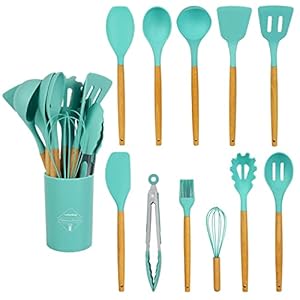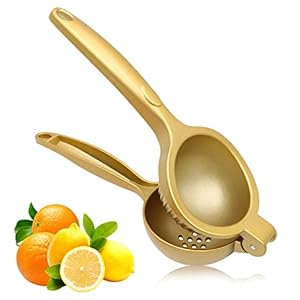
Why It Works
- A simple cooked flour slurry called tangzhong gives the bread its moist, fluffy texture and delays staling.
- Enriching the dough with whole milk and butter creates a flavorful and tender loaf.
- A cold proof helps the dough develop more flavor and makes it easier to fill, roll, and shape.
When I was a child, babka was always present on my grandparents’ table. Every time my family drove from Long Island to Sheepshead Bay in Brooklyn to see them, we were greeted with the scent of my grandmother’s chicken soup and a giant loaf of babka, unwrapped and ready for us to devour. I have so many fond memories of those visits, except for the unfortunate fact that the babka itself was often dry and overbaked, and never as chocolatey as I expected it to taste. I’ve since remedied that by creating my own recipe for a babka that is rich, tender, and filled with just the right amount of chocolate. The secret to its success? Breaking with some of the most traditional techniques.
Serious Eats / Debbie Wee
Preparing babka at home may seem daunting given its layers of chocolate interwoven with lush dough, and the appeal of premade loaves can’t be denied. But there’s nothing quite like the visceral joy of twisting and rolling the dough and the smell of the sweet bread wafting through your home. With some guidance and understanding of the key techniques, the bread is pretty straightforward to make and comes out just as good—and in many cases much better—than the loaves sold in stores.
A Brief History of Babka
Babka is a sweet yeasted bread traditionally filled and twisted with cinnamon or chocolate, and has been a mainstay on the Jewish dessert table for decades. According to the late food historian Gil Marks, babka can be traced to early 19th century Poland. Writing in his 2010 book Encyclopedia of Jewish Food, he notes that bakers spread extra dough from preparing the Sabbath egg challah “with a little jam or cinnamon, perhaps sprinkled some raisins over the top, rolled it up, and baked it alongside the bread.”
Those who emigrated from Poland to the United States in the late 1800s and early 1900s brought the tradition with them, with some opening their own bakeries. By the mid-20th century, babka had become a staple at Jewish bakeries throughout Manhattan’s Lower East Side.
Serious Eats / Debbie Wee
One such bakery was my grandfather Sam and great-aunt Fanny’s, F & G Bakeshop, which they operated from the 1930s to the 1950s. Located below a tenement on Rivington Street, the bakery was stocked with challah, babka, mandel bread, black and white cookies, rugelach, and honey cake, among many other Jewish staples. Each morning before dawn, my father—then a teenager—delivered challah to local synagogues and grocery stores using an old pram.
My family’s bakery, along with other businesses from that time, eventually closed, and great babka has become harder to find as more industrialized versions have taken their place. Today, baking your own babka at home is one of the surest routes to the perfect loaf, one that harkens back to babka’s early days as a buttery challah spinoff.
Key Techniques for Making Babka Dough
In my research, I noticed that many modern interpretations of babka call for all-purpose flour, and though many contain butter, most supermarket or mass-produced babkas, as well as babkas from kosher bakeries, omit dairy to make them pareve. (Pareve is Yiddish for “neutral,” which refers to foods that are meat- and dairy-free.)
Serious Eats / Debbie Wee
Before babka gained popularity in the 1990s, it had developed a reputation among some in the Jewish community for being dry, dense, and lacking in flavor—possibly because many mass-produced loaves were dairy-free. These loaves were also often put through a dough sheeter—a piece of equipment many commercial bakers use to roll dough—and rolled super thin, which led to babka that was more likely to overbake on its exterior and become dry and chalky.
The following are some of the critical technical decisions I made to arrive at my ideal babka.
Enrich the Dough With Butter
After lots of testing, I decided that butter was essential for my babka: It creates an enriched dough that’s reminiscent of the challah babka was originally made with and sturdy enough to hold up to the hefty chocolate filling. The result bakes up into a loaf with a rich and buttery flavor that oil simply doesn’t have.
Serious Eats / Debbie Wee
On a technical level, the butter plays an important structural role in the dough by coating the glutenin and gliadin (the gluten proteins) with fat and limiting gluten development. As the Serious Eats editors noted in their gluten explainer, once the proteins are coated with fat, they “have a harder time bonding, and form shorter gluten chains.” The result is a loaf with a lush texture close to that of brioche.
Use Bread Flour
Here’s the tricky part: We want to enrich the dough with butterfat for both flavor and texture, but we still need some gluten to achieve a babka that has structure and a pleasing chew. The answer lies in the choice of flour. A flour’s protein content is an indicator of its gluten-potential: The higher the protein content, the more gluten the flour is capable of producing. Bread flour typically has a protein content of 12 to 14%, which is higher than all-purpose flour’s nine to 12%, and that’s a difference that matters in this recipe—especially given the butter in the dough. By using bread flour, my babka can form just enough gluten despite the butter, producing a loaf that has more structure and rise, maintains its shape, and stands up to the weight of the chocolate filling better than a babka using all-purpose flour.
Serious Eats / Debbie Wee
By combining the gluten-limiting powers of rich and fatty butter with the gluten-producing ability of bread flour, we’re able to hit the babka sweet spot, one that’s tender but still substantive, with a satisfying chew. It’s hard to get a similar result when making a fat-enriched dough with all-purpose flour.
Incorporate Tangzhong
The worst babkas are dry and dense, so part of my mission was to create a recipe where a moist and tender crumb was guaranteed. My solution: a tangzhong. This is arguably the biggest deviation I take from a traditional babka recipe, but the results more than justify it.
A tangzhong (and the related Japanese yudane and yukone) is a cooked mass of flour and water that is an important element of tender breads like Japanese milk bread and shokupan, and Chinese steamed buns. By briefly cooking a bit of flour with water or milk, the starches gelatinize, allowing you to incorporate more liquid into the dough than otherwise possible, and yielding a soft, plush bread with a longer shelf life. As Serious Eats contributor Andrew Janjigian wrote his milk bread recipe, this gelled mixture is “drier in texture than an identical ungelled one,” allowing for “dough with more water in it than it could otherwise contain—without it turning to soup.”
Serious Eats / Debbie Wee
Andrew calls this “stealth hydration,” and it not only makes a bread that’s more moist and tender, but also more resistant to staling. It’s why many bakers, including myself, use a tangzhong even in places it’s not traditional. While tangzhong is traditionally prepared on the stove, my method comes together in the microwave—a technique similar to the one Andrew uses to prepare his milk bread.
Knead Well—and Avoid Adding More Flour
Because of all the dairy, the dough will be sticky, making it harder to work with. Though it may be tempting to add more flour, resist! Let your stand mixer do the hard work and keep kneading until the dough is nicely elastic and passes the windowpane test.
To perform the windowpane test, pull off a small, marble-sized piece of dough, flatten it, then gently stretch it until it’s a thin, translucent window of dough that resists tearing. This means that your dough has developed enough gluten, which is essential for the structure of the loaf. (Though all dough will eventually tear if you stretch it too much, you should be able to stretch it quite thinly before that happens.)
How to Fill and Shape Babka
For the Most Flavorful Filling, Use High Quality Dark Chocolate
While cinnamon is the more traditional filling, chocolate has become synonymous with the babka many people know and love today. Spring for a high-quality, dark chocolate bar, in the 70-72% range. Dark chocolate helps to balance out the sugar, creating a bittersweet filling that isn’t cloying.
Serious Eats / Debbie Wee
In my years eating chocolate babka, I’ve come across fillings that range from dry and pasty to ganache-like. After testing various iterations, I landed on the rich, creamy side by making an easy ganache with heavy cream, dark chocolate, butter, sugar, and vanilla. Espresso powder and unsweetened cocoa powder add complex, bittersweet flavor to the ganache, while cinnamon brings a warm, spiced note that evokes the even more traditional cinnamon babka filling.
Once you make the quick stovetop ganache, let it sit at room temperature so it can cool and thicken to a peanut butter–like consistency, which takes around two hours. If your filling is too runny when you go to shape the babka, it will seep out of the sides and distribute unevenly; too firm and you risk tearing the dough while spreading the ganache. You can speed up the process by cooling it in the fridge, but be sure to stir it often to prevent it from firming up too much.
Freeze Before You Slice the Dough
After you roll the dough up, freezing it until slightly firm, about 15 minutes, keeps the chocolate and dough cold, making it easier and neater to work with when you go to slice it in half before twisting the two halves together. This creates a dramatic chocolate swirl once you twist the dough together.
Twist With Confidence
Splitting the dough completely down the center and twisting it before setting it in the loaf pan creates a babka’s signature swirl (babka is the diminutive form of “baba,” the Polish word for grandmother, and some say “babka” refers to the many pleats a grandmother’s skirt may have.)
Serious Eats / Debbie Wee
Twisting isn’t rocket science, so don’t overthink it. Time is of the essence: the warmer your dough is, the harder it will be to maneuver. With the cut sides of the dough facing up, cross one piece of dough over the other to form an X, then twist from the center, aiming for two full twists on each side of the X. Do your best to keep the cut sides facing up, but if not, the loaves will still be beautiful and delicious. No two loaves will look exactly alike, which is the beauty of babka.
Proofing and Baking Babka
Proof Adequately
As the dough ferments, the yeast consumes sugars in the dough, producing carbon dioxide, ethanol, and other chemicals that give the loaf its flavor and rise. In my recipe below, the babka dough proofs for about an hour at room temperature before it chills in the refrigerator for at least two hours. This refrigeration period slows down fermentation, allows the dough to develop more flavor, and helps it relax, making it easier to roll and fill. After filling and twisting the loaves, the dough proofs a second time to give the gluten time to relax and allows the dough to regain some of the volume it may have lost during shaping.
Serious Eats / Debbie Wee
Bake the Loaves in the Lower Third of the Oven and on Top of a Baking Sheet
Baking the loaves at 350°F (180°C) in the lower third of the oven ensures the babka cooks throughout without becoming too dark on top. I recommend baking the loaf pans on top of a baking sheet, which will prevent the bottoms from getting too dark.
Brush the Finished Loaves With Simple Syrup, and Cool the Babka Before Slicing
The syrup keeps the loaves moist and fresh for longer, and gives them their signature shine. Cooling the loaves in their pans for an hour before removing them and allowing them to cool for another hour on a wire rack gives the filling and bread time to settle and firm up slightly, helping slices stay as intact as possible when you cut into the loaf.
Serious Eats / Debbie Wee
Trending Products










